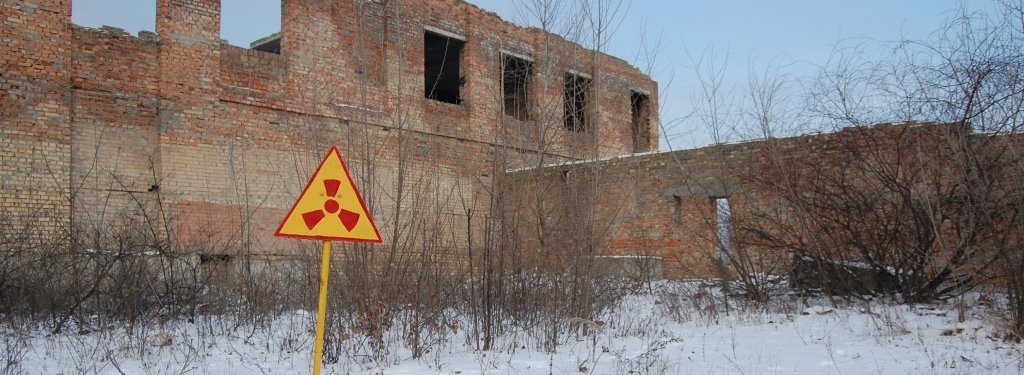First study of its kind shows how detrimental nuclear attack would be for the aggressor nation.
One hundred. That’s the number researchers argue is a pragmatic quantity of nuclear weapons for any nation to have.
To put that number in perspective, the U.S. and Russia each currently have thousands of nuclear weapons. Both nations hew to the concept of nuclear deterrence—more firepower is intimidating and makes other countries think twice before picking a fight.
More than 100 nuclear weapons in a nation’s arsenal does more harm than good—as using them can destabilize the country that uses them even in a best-case scenario.
Joshua Pearce, professor at Michigan Technological University, and David Denkenberger, assistant professor at Tennessee State University and director of Alliance to Feed the Earth in Disasters (ALLFED), co-authored an article published today in the journal Safety.
In “A National Pragmatic Safety Limit for Nuclear Weapon Quantities,” Pearce and Denkenberger examined direct negative physical consequences of the use of nuclear weapons to the nation firing them, including impacts such as starvation and global supply chain disruption coupled with the cost to maintain an extensive arsenal.
To summarize: A nation willing to use its nuclear weaponry against another must determine whether it has the ability to survive the problems of its own making.
There are nine nuclear weaponized nations: the U.S., Russia, the United Kingdom, France, China, India, Pakistan, Israel and North Korea. There are approximately 15,000 nuclear weapons globally. Under the disarmament proposed in the paper, this number would drop to 900 or fewer.
“With 100 nuclear weapons, you still get nuclear deterrence, but avoid the probable blowback from nuclear autumn that kills your own people,” Pearce says. “Defense expenditures post-9/11 show we care about protecting Americans. If we use 1,000 nuclear warheads against an enemy and no one retaliates, we will see about 50 times more Americans die than did on 9/11 due to the after-effects of our own weapons.”
Pearce notes this is the first study to quantitatively demonstrate just how dangerous the use of nuclear weapons is even for the aggressor nation that fired off the nukes.
After-effects of nuclear aggression
In the paper, Pearce and Denkenberger write, “No country should have more nuclear weapons than the number necessary for unacceptable levels of environmental blowback on the nuclear power’s own country if they were used.”
The consequences of environmental blowback include a significant drop in global temperature because of soot from nuclear blasts blocking the sunlight from reaching Earth’s surface, decreased precipitation, a drop in food production because of blocked sunlight and less moisture, increased ultraviolet radiation resulting from a badly damaged atmosphere, and non-functioning supply chains.
“We should be clear this analysis represents a severe underestimate on the number of dead Americans,” Pearce says. “We assume severe rationing, which is the best way to keep the most people alive when there is this level of food shortage. It means anyone who would die of starvation is immediately cut off from food.
“I don't think rationing would go overly smoothly—a lot more people would die in violence internally than what we estimated based on lack of calories.”
Putting numbers to the evaluation, Pearce and Denkenberger examined the threat potential of a 7,000-weapon arsenal, a 1,000-weapon arsenal and a 100-weapon arsenal. Playing out a hypothetical scenario, the researchers explain that if the U.S. used 100 nuclear weapons against China’s most populous cities, initial blasts would likely kill more than 30 million people. This would kill a higher fraction of the population than even severe pandemics, providing plenty of deterrence to prevent another nation from attacking.
Pearce and Denkenberger, based on previous work, built a model of the burnable material in cities, how much would burn in a nuclear attack, how much of that would turn into smoke, and how much of that smoke would make it into the upper atmosphere. Then they used the result of climate and crop simulations to predict the impact on food supply. They coupled this with food storage to predict how many people would starve.
The agricultural loss from this so-called “nuclear autumn” would range from 10-20 percent, enough to cause widespread food shortages in wealthier nations and mass starvation in poorer nations.
Starvation could result because nuclear weapons would cause cities to burn, putting smoke into the upper atmosphere and blocking sunlight for years. This could cause lower rainfall and lower temperatures, potentially causing winter-like weather in the summer, called “nuclear winter.” Less severe reduction in sunlight is called “nuclear autumn,” which could still cause many millions of people to starve.

It is clear that even 100 nuclear weapons is more than enough to dramatically reshape the globe, and Pearce and Denkenberger argue it’s also more than enough to deter other countries. Maintaining more than that number, the authors say, is not only against the best interest of a nation to protect its people, but also costs a significant amount to maintain.
Policy recommendations
In addition to a large arsenal reduction, Pearce and Denkenberger make other policy recommendations. They argue that the Department of Defense should extend its nuclear disaster modeling past the initial blast to include potential deaths caused by nuclear autumn.
Says Denkenberger: “The U.S. government should greatly increase focus on producing alternative food to provide for survivors in the case of nuclear war; with supply chains cut off, all food Americans eat will have to come from within the nation’s borders.”
“It is not rational to spend billions of dollars maintaining a nuclear arsenal that would destabilize your country if it was ever used,” Pearce says. “Other countries are far worse off. Even if they fired off relatively few nuclear weapons and were not hit by any of them and did not suffer retaliation, North Korea or Israel would be committing national suicide.”
Michigan Technological University is an R1 public research university founded in 1885 in Houghton, and is home to nearly 7,500 students from more than 60 countries around the world. Consistently ranked among the best universities in the country for return on investment, Michigan's flagship technological university offers more than 120 undergraduate and graduate degree programs in science and technology, engineering, computing, forestry, business, health professions, humanities, mathematics, social sciences, and the arts. The rural campus is situated just miles from Lake Superior in Michigan's Upper Peninsula, offering year-round opportunities for outdoor adventure.






Comments